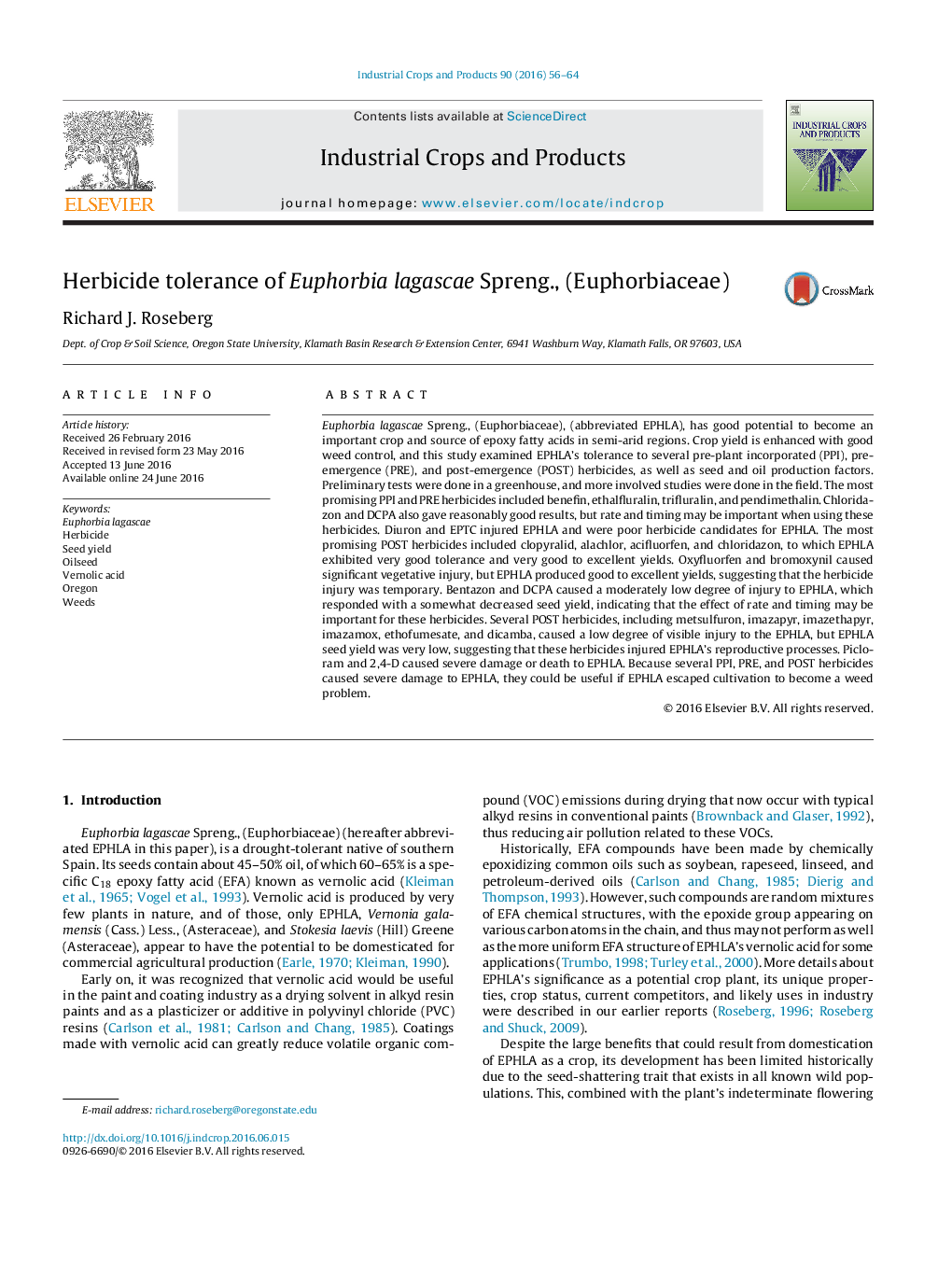| کد مقاله | کد نشریه | سال انتشار | مقاله انگلیسی | نسخه تمام متن |
|---|---|---|---|---|
| 4512098 | 1624820 | 2016 | 9 صفحه PDF | دانلود رایگان |

• Euphorbia lagascae is a potential drought-tolerant specialty oilseed crop.
• Very little information on herbicide tolerance has been published previously.
• Euphorbia tolerates several pre-emergence and post-emergence herbicides well.
• Some herbicides do not damage vegetative growth but do reduce seed yield.
Euphorbia lagascae Spreng., (Euphorbiaceae), (abbreviated EPHLA), has good potential to become an important crop and source of epoxy fatty acids in semi-arid regions. Crop yield is enhanced with good weed control, and this study examined EPHLA’s tolerance to several pre-plant incorporated (PPI), pre-emergence (PRE), and post-emergence (POST) herbicides, as well as seed and oil production factors. Preliminary tests were done in a greenhouse, and more involved studies were done in the field. The most promising PPI and PRE herbicides included benefin, ethalfluralin, trifluralin, and pendimethalin. Chloridazon and DCPA also gave reasonably good results, but rate and timing may be important when using these herbicides. Diuron and EPTC injured EPHLA and were poor herbicide candidates for EPHLA. The most promising POST herbicides included clopyralid, alachlor, acifluorfen, and chloridazon, to which EPHLA exhibited very good tolerance and very good to excellent yields. Oxyfluorfen and bromoxynil caused significant vegetative injury, but EPHLA produced good to excellent yields, suggesting that the herbicide injury was temporary. Bentazon and DCPA caused a moderately low degree of injury to EPHLA, which responded with a somewhat decreased seed yield, indicating that the effect of rate and timing may be important for these herbicides. Several POST herbicides, including metsulfuron, imazapyr, imazethapyr, imazamox, ethofumesate, and dicamba, caused a low degree of visible injury to the EPHLA, but EPHLA seed yield was very low, suggesting that these herbicides injured EPHLA’s reproductive processes. Picloram and 2,4-D caused severe damage or death to EPHLA. Because several PPI, PRE, and POST herbicides caused severe damage to EPHLA, they could be useful if EPHLA escaped cultivation to become a weed problem.
Journal: Industrial Crops and Products - Volume 90, 15 November 2016, Pages 56–64